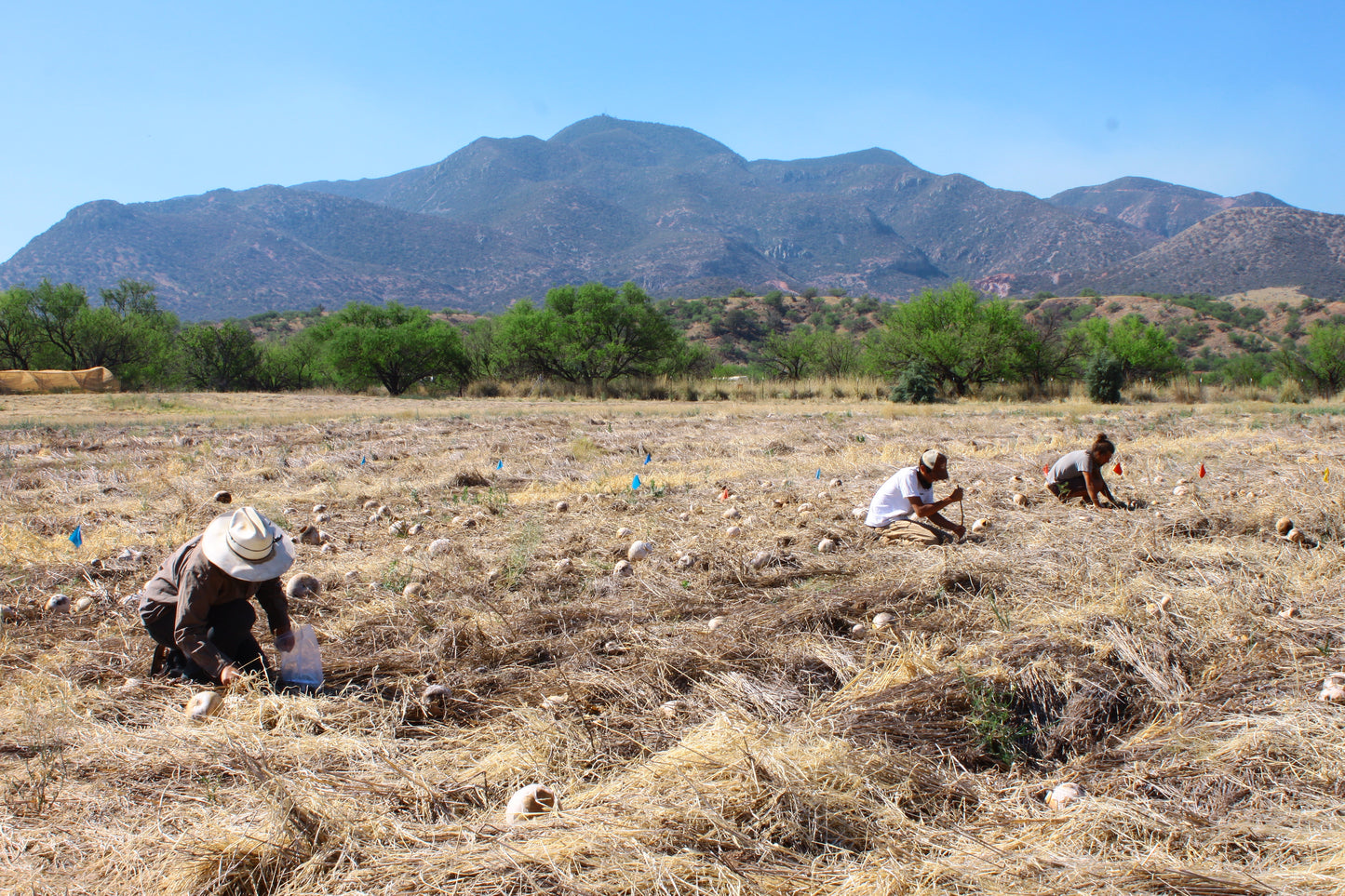
The News from the Conservation Farm Blog posts are written by the 2013 farm apprentices Danielle, Matt, Pablo, Travis, and Francesca.
Since early April, the Native Seed/SEARCH Conservation Farm has been home to a new team of awesome apprentices. Through this blog, we will bring you regular updates of our activities on the farm, and share our photos, recipes and ideas.
After an inspiring week attending Seed School at the Conservation Center in Tucson, we headed down to the Conservation Farm in Patagonia to put theory into practice. This season, a particular focus is being put on growing out some of the oldest accessions in the Native Seed/SEARCH collection in order to regenerate the seed stock of these varieties to supply fresh seed stock for seed bank storage. Since arriving, we have helped to seed various types of beans and corn that fall into this category, such as Paiute White Tepary Beans and Navajo Robin’s Egg Corn. We are also evaluating varieties, including 25 types of corn, and 8 different types each of tepary beans, common beans, and cowpeas to see how they adapt to the region’s climate.
We have worked with Benito, the resident farm guru, to set up the irrigation system, and have cleaned out and refilled the irrigation pond. The pollination cages have been set up and filled with sunflowers, beans, chilis, peppers, indigo and tomatoes. These cages allow one type of crop to be grown in physical isolation, which will prevent cross-pollination to maintain seed purity. The apprentices have also been involved with a dry-land crop trial. Last year, a cover crop of rye and oats was grown and left to fall down. It now provides a dense layer of cover for the soil, which has been planted with several accessions of corn including Chapalote. This dryland field will not be irrigated, in order to determine if it is possible to grow these crops with minimal human input in this area.
The crop of garlic has been harvested, and the immature seed heads, known as scapes, have been cut off another variety of garlic. The scapes made a very spicy pesto, and a delicious infused oil. Most of the apprentice meals are made from food produced at the farm and the garlic scapes are a welcome addition.
Hedgerows of sunflowers and buckwheat have also been seeded by the apprentices. These divide clusters of crops, and will work to attract beneficial insects and distract insects that could potentially cross-pollinate plants of the same variety growing nearby, as well as provide shade for the growing crops, and habitats for other beneficial wildlife. Additionally, we have been working on cutting back the hold bindweed has over some of the fields at the Conservation Farm. This is a very pretty, but highly invasive vine, which chokes crops and takes nutrients from the soil. Efforts are being made to map the bindweed, and create new fields around this, which are bindweed-free.
When the heat of the day is too much, we often process seed in the barn. Some of the main crops we have worked with are different corn and gourd accessions which were grown out at the farm last year. For the corn, we shuck the kernels using a hand-cranked sheller, but it’s more fun smashing, threshing and winnowing the gourds to find the seeds.
An apprentices’ garden has also been planted, allowing us to indulge our passion for local and regionally-adapted food. We have access to a wide variety of dried corns and beans at the farm, and these foods have become our staples. We’ve even put together a bicycle powered corn grinder to make our ‘daily bread’ – corn tortillas. Future blog posts will share information on how we nixtamalize the corn and make tortillas.
